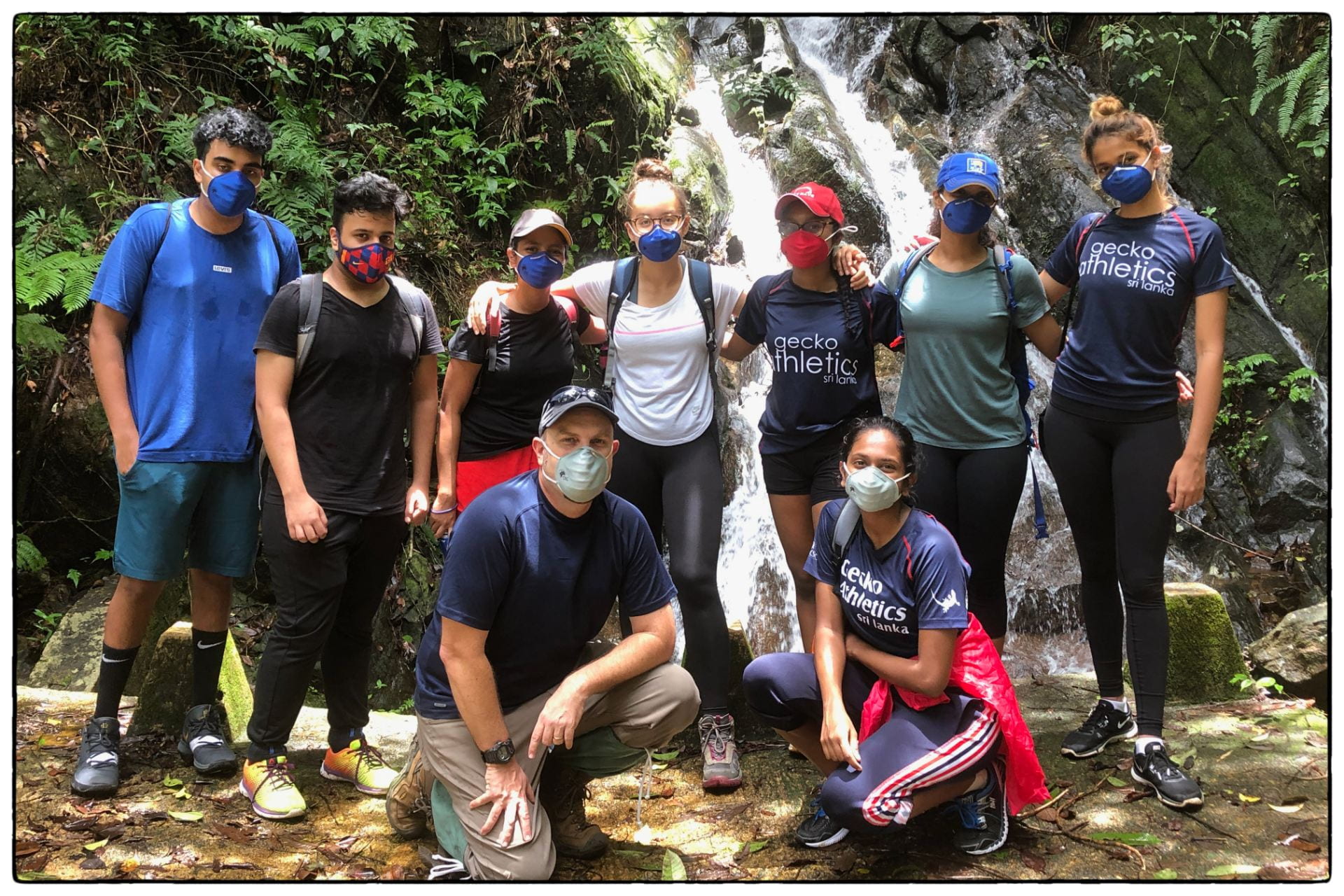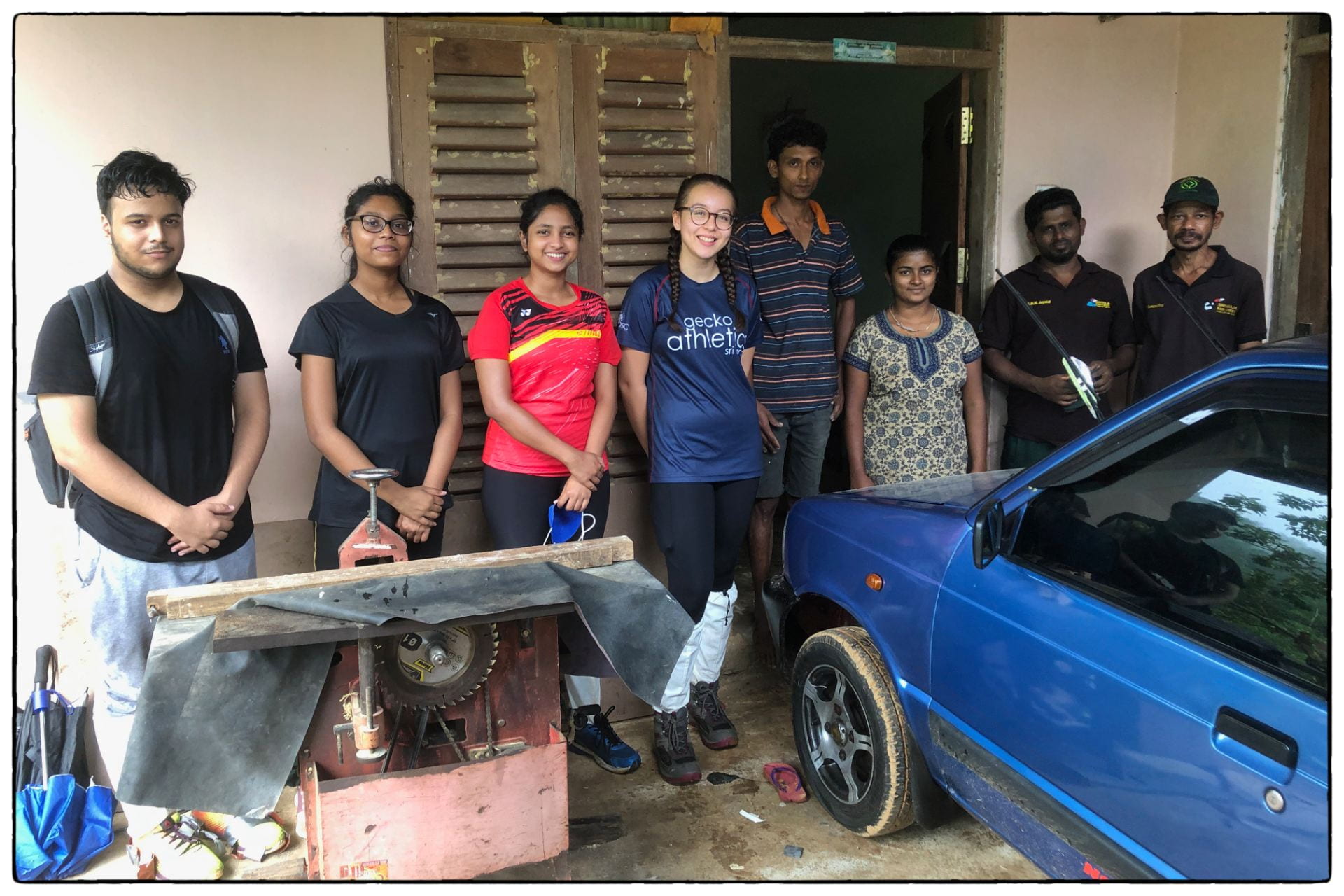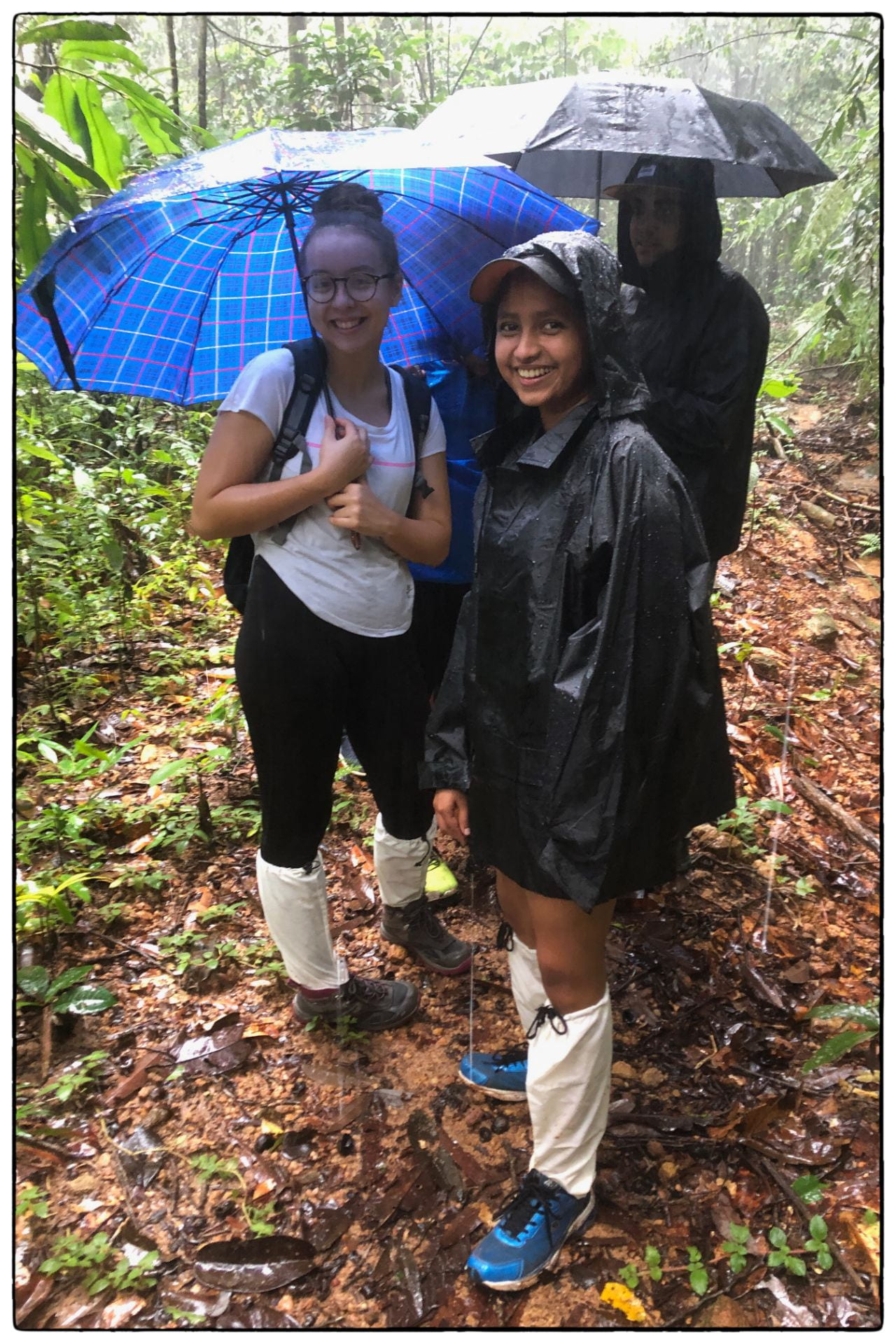
The geography class 2021
Pc: Ms. Desline
All IB geography students have to do an Internal Assessment (IA) related to a topic discussed in class. To do so, students come up with a research question, gather data, analyze it, and come up with a conclusion to the research question through physical engagement.
Mr. Lockwood, our Geography teacher, takes the IB geography class every year to the Sinharaja Rainforest in Sri Lanka to collect data for the IAs. So this year we were the lucky batch. The trip was originally planned to be held in April and everyone was very eager but unfortunately, Covid-19 stuck the world and we had to postpone it to late September. The students were finally back in school and very excited about the trip. As the excitement still remained our enthusiasm was a little disturbed by the piling workload. To cover-up for the time lost during DLP and also the upcoming tests almost all the subjects had some kind of assignment due. Adding to that one class had their English IOs, the HL Math class had a test on Calculus, and SAT examinations were to take place in the week after the trip; some of us had more work than the others. But still, we were quite hesitant to talk to Mr. Lockwood especially because of his keenness on joining this trip. However, after much debate from the classmates, we finally went to him and asked whether we could do the Mullawela hike on another day and leave Sinharaja early on Saturday. He was very understanding and was willing to consider our suggestion.
Finally. the day of the trip arrived. We were going to leave at around 8.00 in the morning on the 23rd of September. It was about a 2-3 hour drive from OSC and it was almost lunch when we reached there. We hiked to Martin’s lodge, which took us approximately 25 minutes. We had lunch at the common area and Mr. Lockwood did a briefing of the plan during our stay there. We then went on a small hike into the Sinharaja woods. By the time we came out of the gates we were literally soaked up but it was really interesting as a walk in the woods is always the best. Then we had dinner back at the Lodge and did a little recap of the day’s happenings. We also got the opportunity to interview Mr. Martin’s daughter and it was very helpful to get familiar with the whole procedure, especially for the Sinhala speakers. Later, we played cards in our rooms and fooled around through the night. We were playing Monopoly cards when Satwick left to get some water. The day had been pretty chill so we thought we’ll hype up the evening a bit. We left the room we were in and went to the next room turned off the lights and locked ourselves in. And when Satwick came back up we knew we’d get caught as everyone was doubling over with laughter. The moment just got way better when Mr. Lockwood asked the boys to go to their rooms, and Kevin been stuck with us girls in the room started freaking out. It was such a peak of our trip and I’ll never forget the laughs we had.

Some of the class members with a family we interviewed. Pc: Mr. Lockwood
On the second day, we were put into groups of 2, my group being me and Talia, to go and interview the villagers. We had do a bit of hiking to reach the interviews as their houses were widely spread. But overall, it was fun and interesting at the same time to see the different ways of living of the villagers. This activity not only helped us to improve our social skills when interacting with people from the local community but also helped the students to work together as a team.

Me and Talia with one of our interviewees. Pc: Mr. Lockwood
After the interviews were done we had lunch and went for a swim in the stream down the hill. The water was icy cold and we had so much fun. The third day followed the same routine except it was raining so hard that we had to travel by jeeps, even the dip in the stream had to be canceled.
This trip was filled with challenges, starting from leaches who was clinging onto your legs along every step. So we had be prepared with leech sprays and leech socks. All of my classmates were supportive of each other and I got the opportunity to know them better. I also was able to challenge myself to do things that I never knew I could do; from walking over a plank to living four days in a network-restricted area.
This is going to be my last school trip as a senior and I couldn’t have thought of a better way to end it.

Me and Talia in the midst of a pouring rain the middle of Sinharaja.
Pc: Mr. Lockwood
Learning outcomes:
- Identify own strengths and develop areas for growth.
- Demonstrate that challenges have been undertaken, developing new skills in the process.
As a Sinhala speaker, I had to conduct the survey in Sinhala and then translate the answers to my partner in English. Even though I found this task a little hard in the beginning, later on, I became quite comfortable with it. I also became familiar with engaging in a normal conversation with the villagers rather than only sticking to the survey, which I think helped me get a better understanding of their living situations.
- Demonstrate the skills and recognize the benefits of working collaboratively.
In Sinharaja, the surveys were conducted in groups of two. Working in collaboration with a partner made the interviews much easier as the tasks could be divided among the 2 members. As I asked the questions, Talia recorded them and it made the task convenient for both of us.
- Recognize and consider the ethics of choices and actions.
When preparing the questionnaire, we had to make sure to be formal with our questions so as not to sound rude or offensive.




